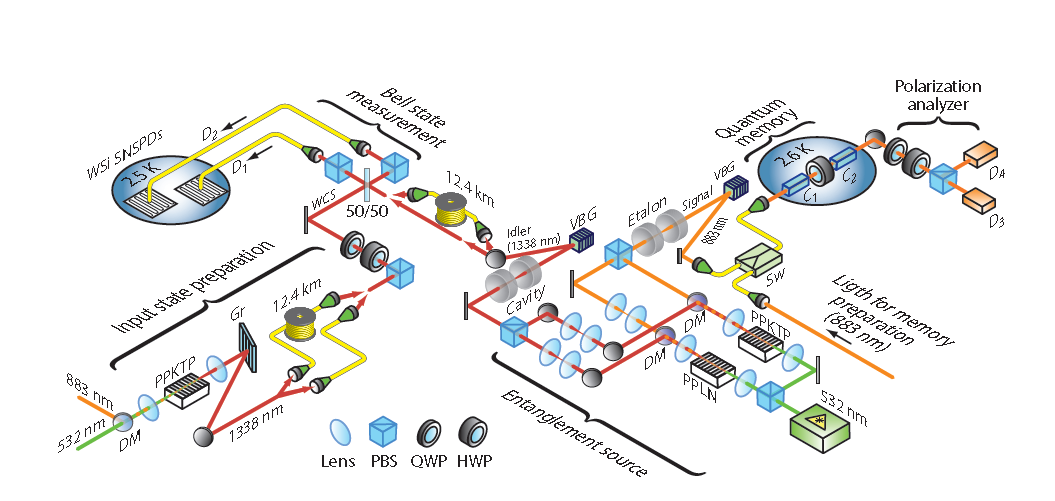Quantum Internet: First Teleportation to a Solid-State Quantum Memory
Quantum teleportation is the ability to transmit from one location to another without traveling through the space in between. Matter itself doesn’t make this journey, only the information that describes it. This is transmitted to a new body that takes on the identity of the original.

But while science fiction fans have focused on body involved, quantum physicists are more interested in the information. For them, teleportation is the enabling technology behind a new generation of information processing technologies including a quantum Internet that allows information to be transmitted with perfect security.
One of the building blocks of the quantum Internet will be quantum routers that can receive quantum information from location and route it on to another without destroying it. So the race is on to demonstrate this kind of technology, which has the potential to revolutionize communications.
Today, Felix Bussières at the University of Geneva in Switzerland and a few pals say they’ve taken an important step towards this. These guys have teleported quantum information to a crystal doped with rare-earth ions—a kind of quantum memory. But crucially they’ve done it for the first time over the kind of ordinary optical fiber that telecommunications that are in use all over the world.
One of the main requirements for widespread teleportation is entangled photons with a wavelength compatible with telecom fiber. That’s not so easy to produce since the entangled photons must be compatible with the discrete energy jumps in the quantum memory. “This wavelength is typically far away from the low-loss region of standard optical fiber,” say Bussières and co.
So the trick these guys have perfected is to generate entangled pairs of photons with different wavelengths. The first has a wavelength of 883nm (near-infrared), which is compatible with a type of quantum memory made of neodymium-doped yttrium orthosilicate crystals. The second has a wavelength of 1338nm (mid infrared), which passes easily through telecoms optical fiber.
The quantum state to be teleported is the polarization of a 1338nm photon. So these guys send the 883nm signal to the quantum memory where it is stored while transmitting the 1338 signal through a 12 km fiber to another apparatus that prepares a third photon (also at 1338 nm) with the polarization to be teleported.
This is when the teleportation takes place. When these two 1338nm photons are made to interact in a certain way, the polarization is teleported to the quantum memory at the other end of the experiment.
The team’s measurements on these photons show that the polarization state is indeed teleported as quantum mechanics suggests. (A crucial part of the experiment is a new generation of single photon detectors that can spot telecoms photons with much greater efficiency than has been possible before.)
So this demonstrates for the first time all the components necessary to carry out teleportation over a standard telecoms network to a solid state quantum memory.
That’s a small but significant step forward. If we’re ever to have a quantum Internet, it’s this kind of gear that will churn away at the heart of it.
Ref: arxiv.org/abs/1401.6958: Quantum Teleportation From A Telecom-Wavelength Photon To A Solid-State Quantum Memory
Keep Reading
Most Popular
Large language models can do jaw-dropping things. But nobody knows exactly why.
And that's a problem. Figuring it out is one of the biggest scientific puzzles of our time and a crucial step towards controlling more powerful future models.
How scientists traced a mysterious covid case back to six toilets
When wastewater surveillance turns into a hunt for a single infected individual, the ethics get tricky.
The problem with plug-in hybrids? Their drivers.
Plug-in hybrids are often sold as a transition to EVs, but new data from Europe shows we’re still underestimating the emissions they produce.
Stay connected
Get the latest updates from
MIT Technology Review
Discover special offers, top stories, upcoming events, and more.